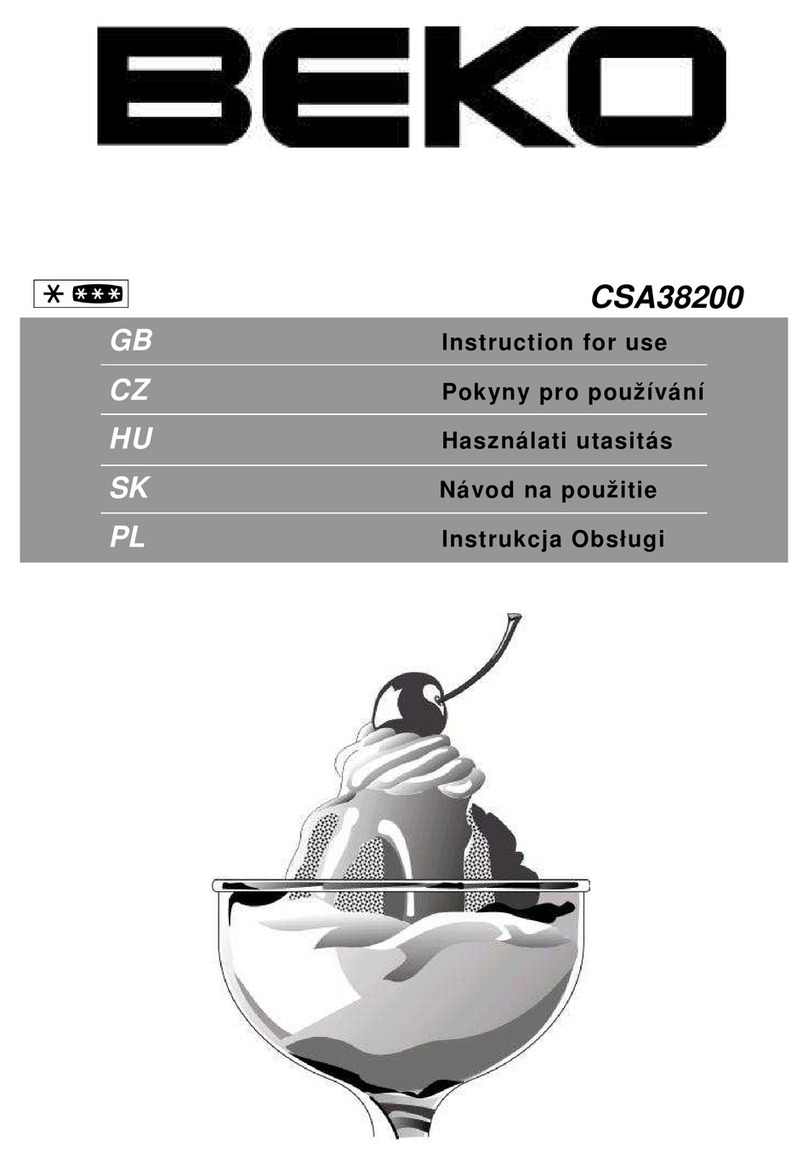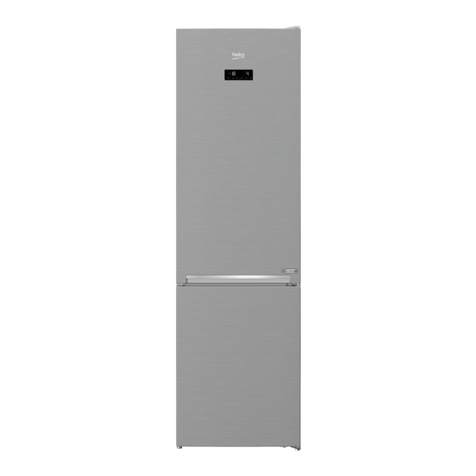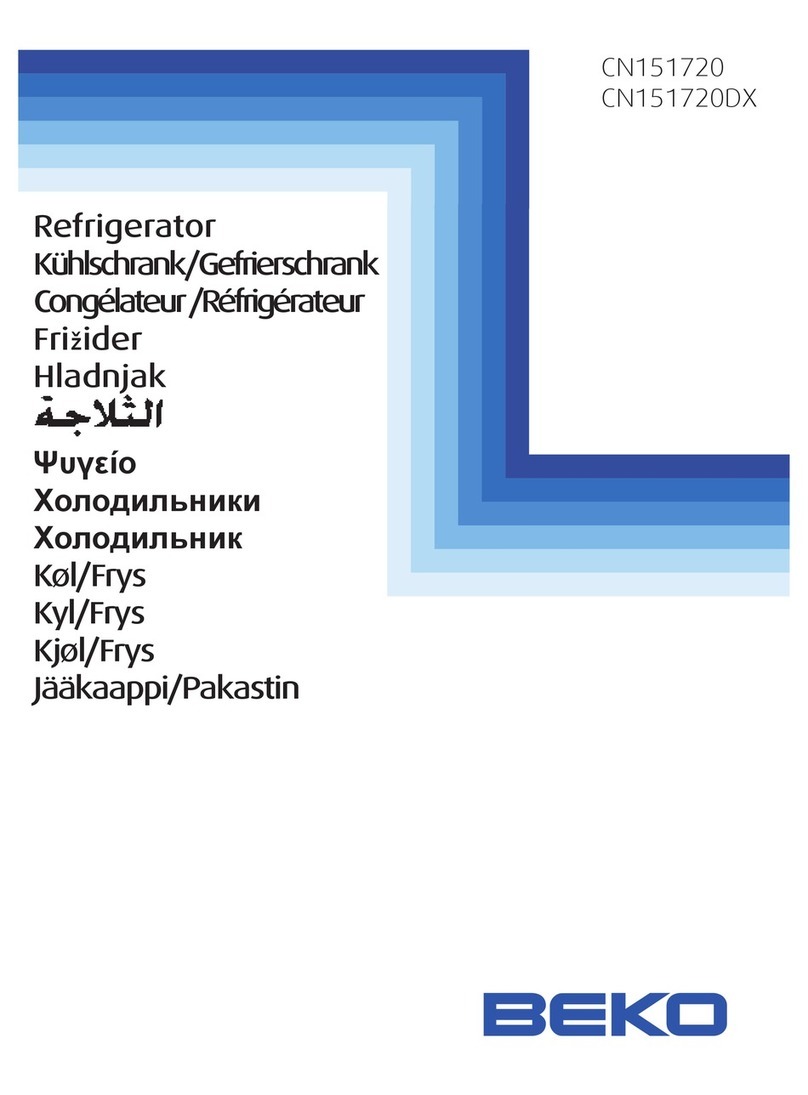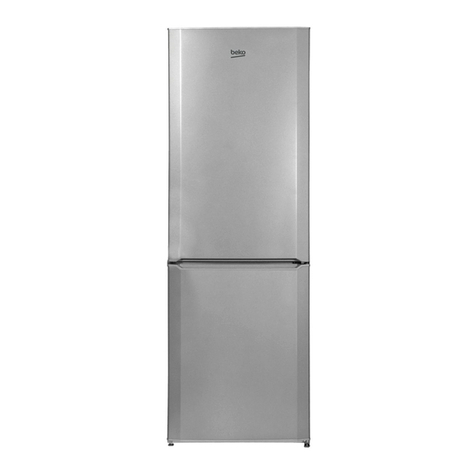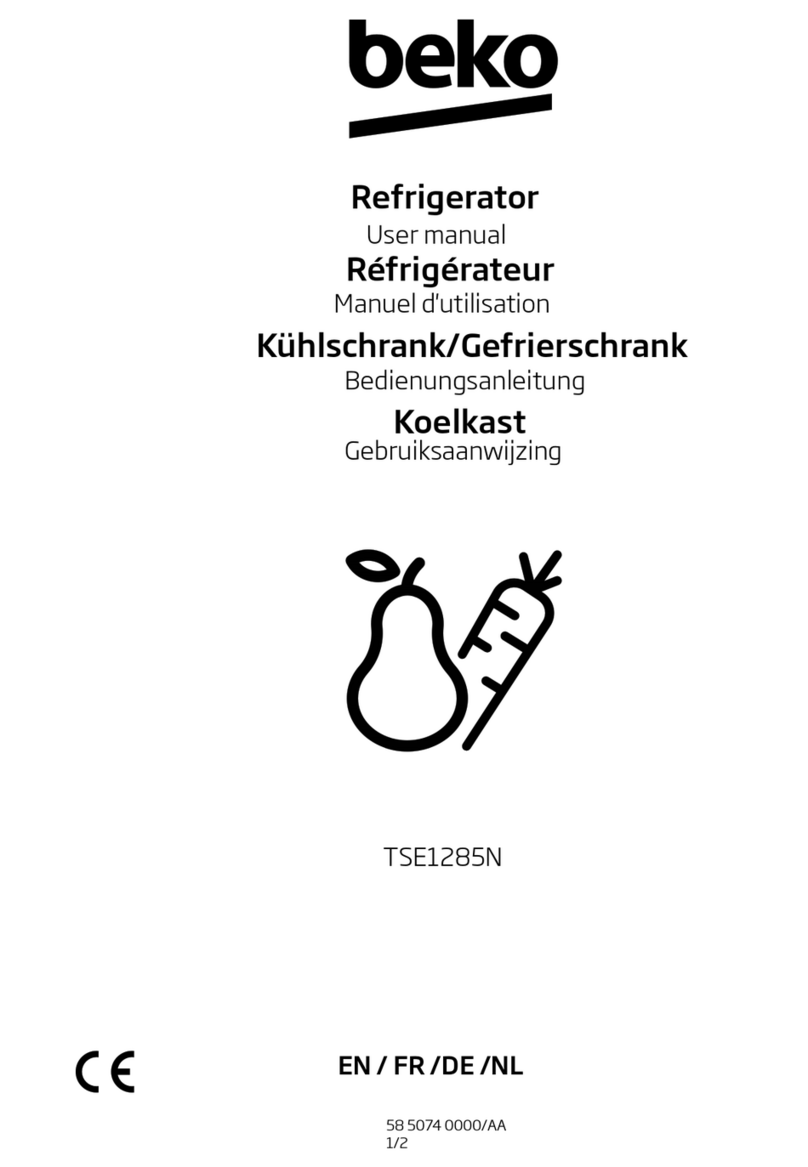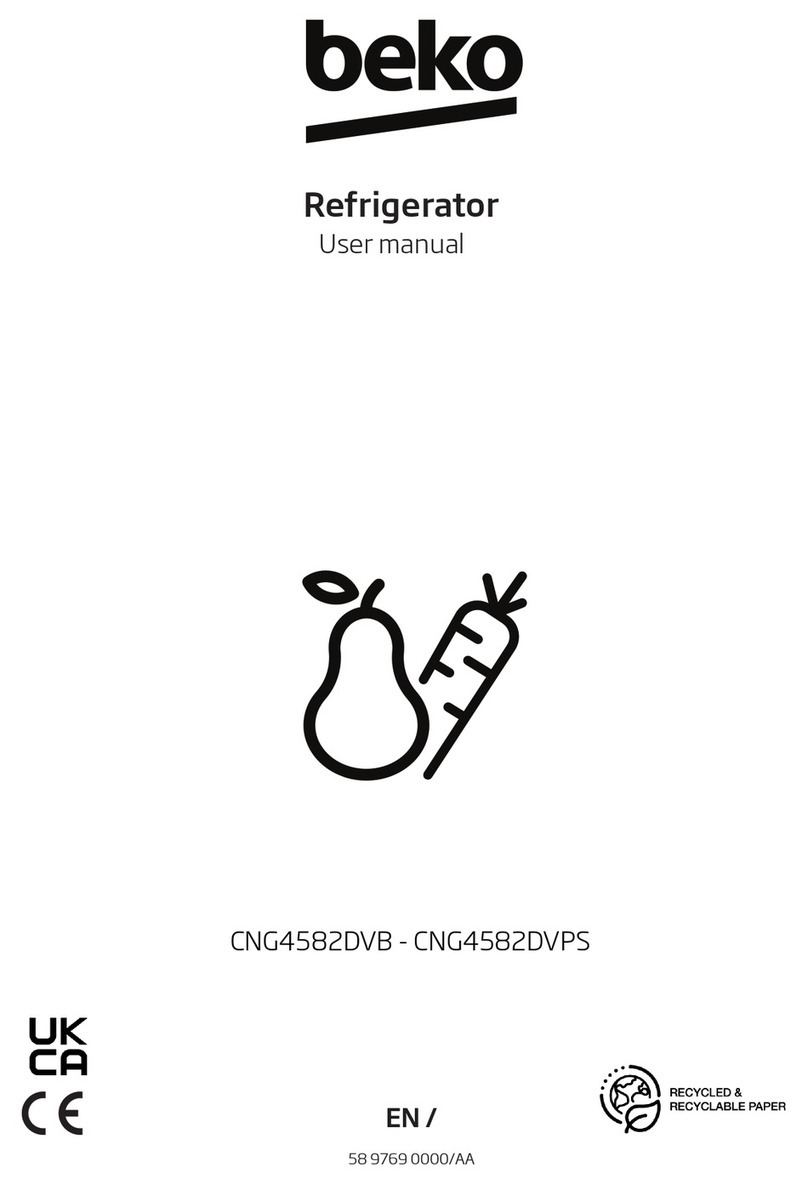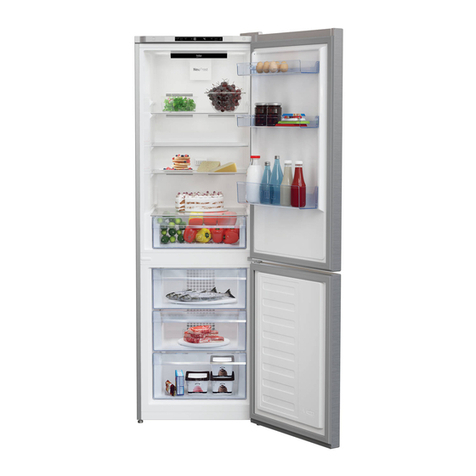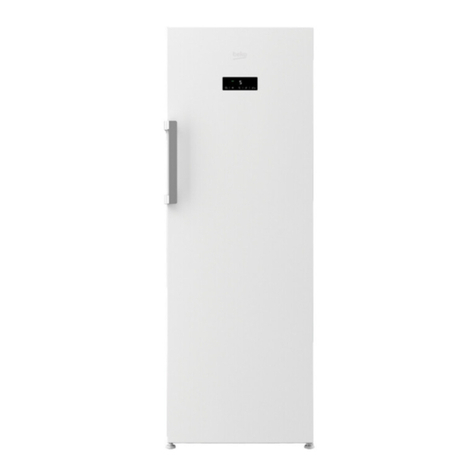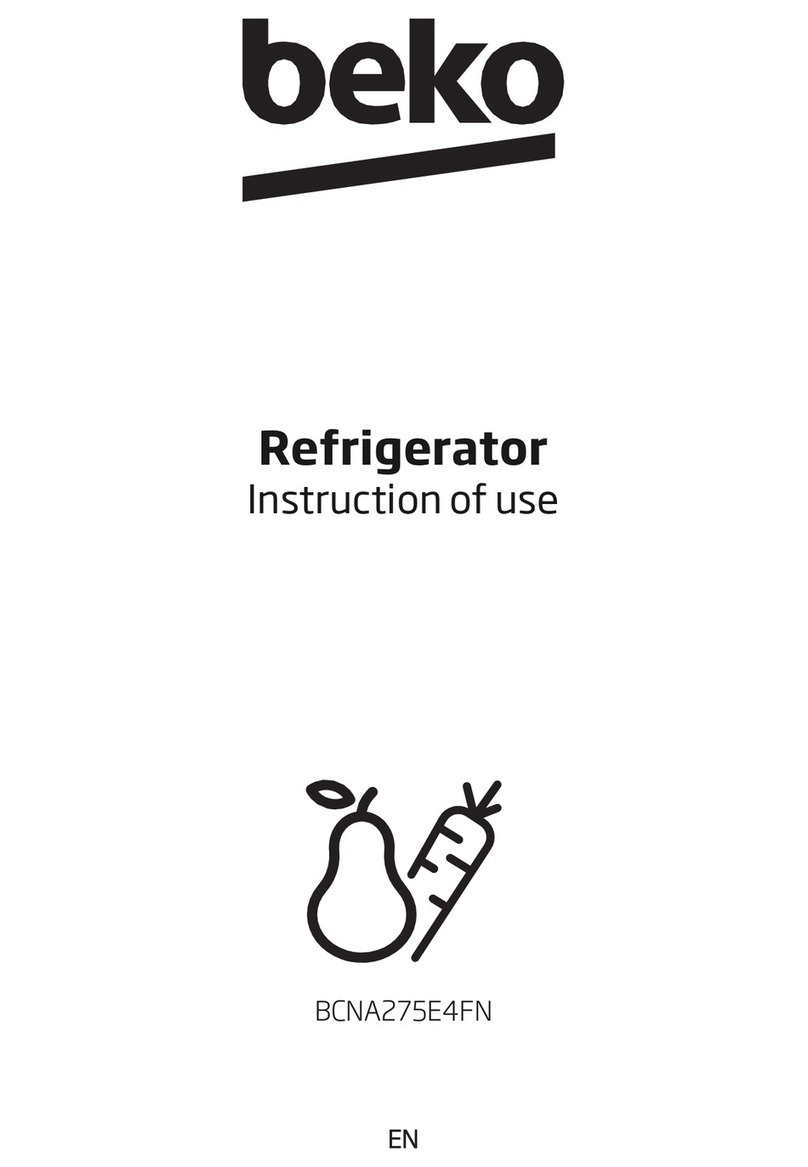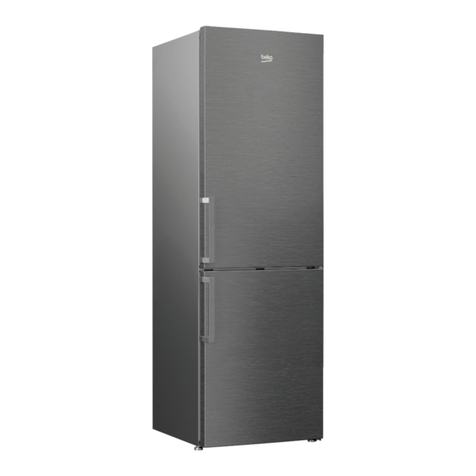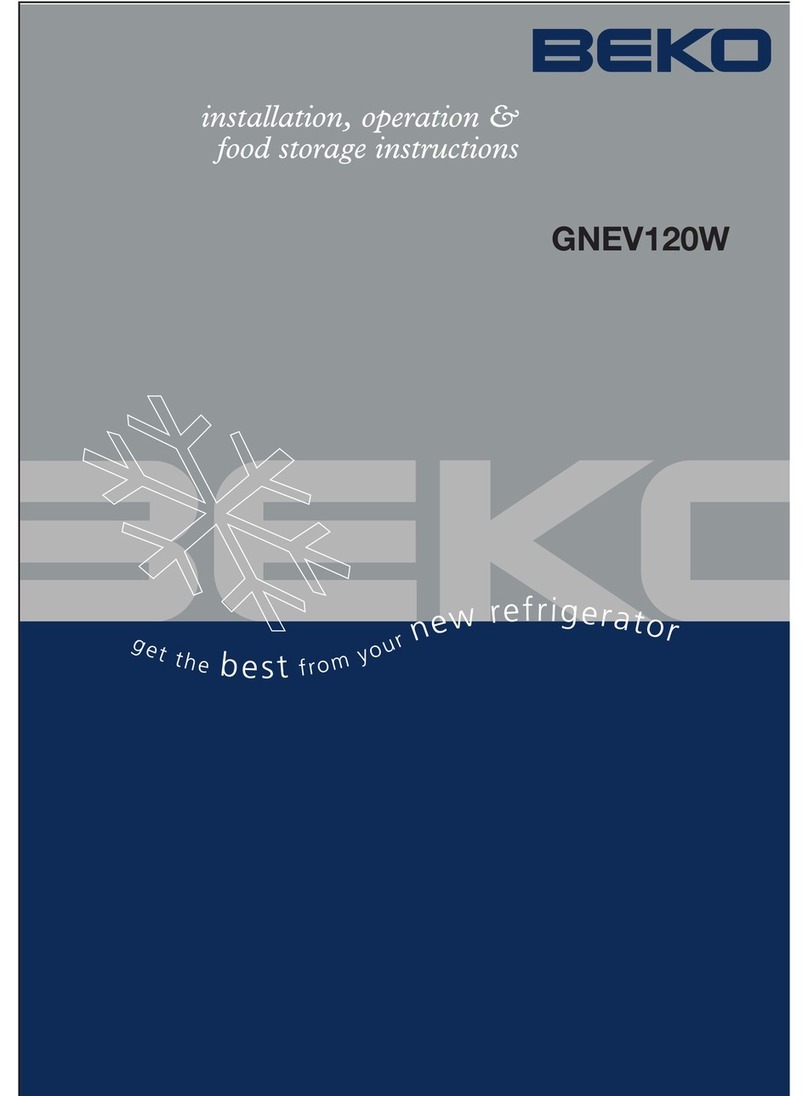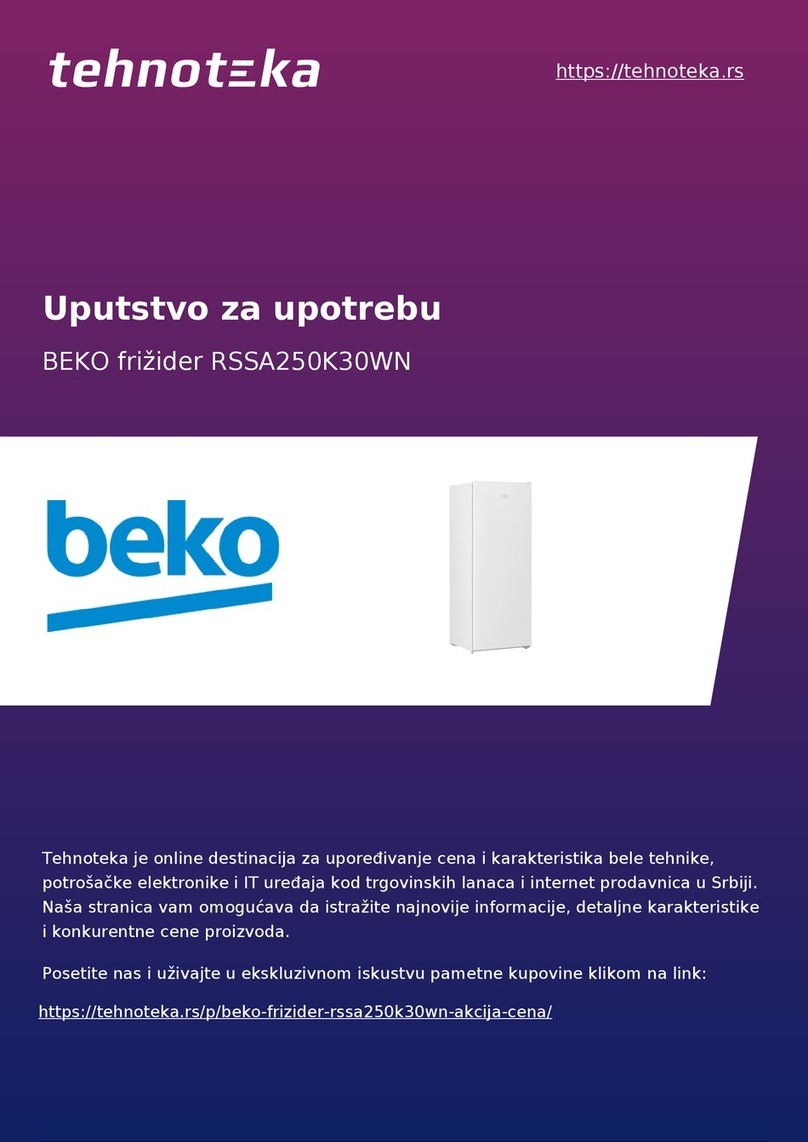
5 / 22 EN
Refrigerator/User Manual
Safety and environment instructions
(electrical card box cover) (1)
is open.
1
1
Do not use steam or steamed
cleaning materials for cleaning
the refrigerator and melting
the ice inside. Steam may
contact the electrified areas
and cause short circuit or
electric shock!
Do not wash the product by
spraying or pouring water on
it! Danger of electric shock!
In case of malfunction, do
not use the product, as it may
cause electric shock. Contact
the authorised service before
doing anything.
Plug the product into an
earthed socket. Earthing
must be done by a qualified
electrician.
If the product has LED
type lighting, contact the
authorised service for
replacing or in case of any
problem.
Do not touch frozen food with
wet hands! It may adhere to
your hands!
Do not place liquids in bottles
and cans into the freezer
compartment. They may
explode.
Place liquids in upright
position after tightly closing
the lid.
Do not spray flammable
substances near the product,
as it may burn or explode.
Do not keep flammable
materials and products with
flammable gas (sprays, etc.) in
the refrigerator.
Do not place containers
holding liquids on top of the
product. Splashing water on
an electrified part may cause
electric shock and risk of fire.
Exposing the product to rain,
snow, sunlight and wind will
cause electrical danger. When
relocating the product, do
not pull by holding the door
handle. The handle may come
off.
Take care to avoid trapping
any part of your hands or body
in any of the moving parts
inside the product.
Do not step or lean on the
door, drawers and similar parts
of the refrigerator. This will
cause the product to fall down
and cause damage to the
parts.
Take care not to trap the
power cable.
